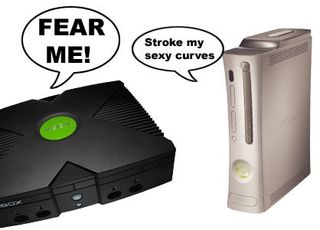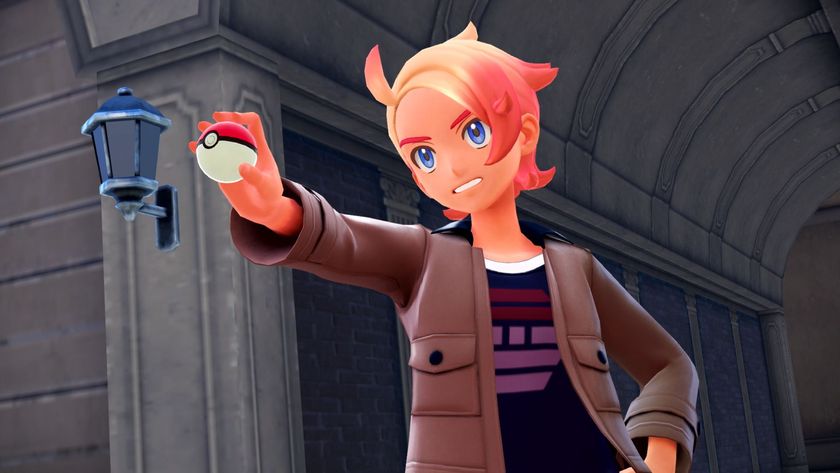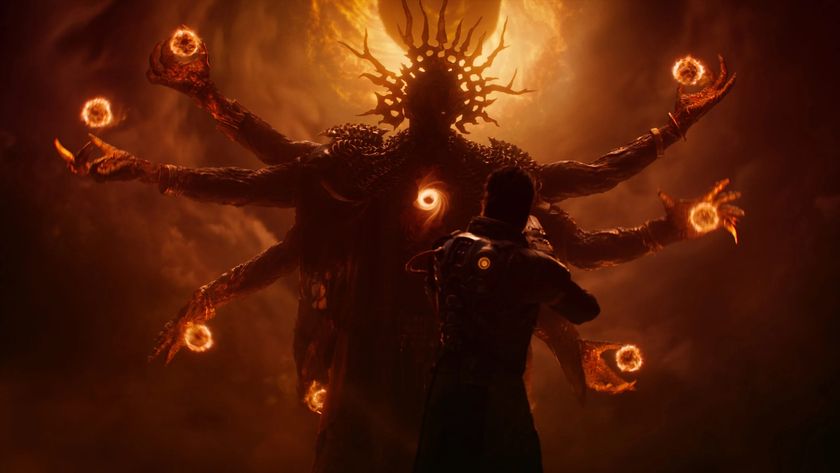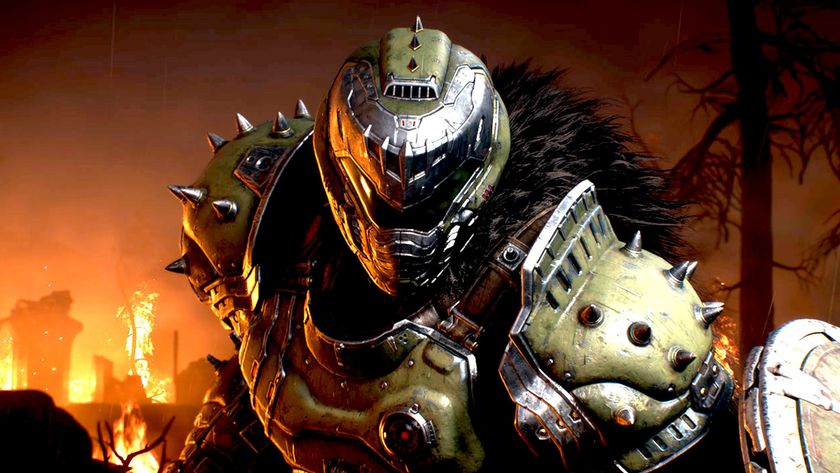The changing faces of the big three
Who got better, who got worse and who screwed it up completely

Where Sony had established itself as the new king of videogame cool and Nintendo was still the big old bundle of fun we'd loved since the '80s, in 2001 MS presented us with a bunch of grinning suits and a perpetual insistence on talking about tech specs. The fact that the machine's name derived from the company's original idea of a "DirectXbox" said it all. That sort of stuff might have excited the back room nerds and boardroom bosses at Redwood, but out in the real console gaming world, no-one cared about that sh*t at all. Still, the ads were cool, funny and weird, and while undoubtedly aping Sony's model in addressing an older gamer, unlike the PS2 adverts, they actually had a point.
Other than that though, we got a bunch of grinning suits, a box that looked like a VCR, a controller that, for all of J Allard's talk of discussion with gamers, seemed woefully out of touch with any of the practicalities of gaming (unless you werethis guy) and overall, a console that excited developers more than it did gamers, attracting stacks of shiny third-party releases but not really selling any more hardware than the Gamecube. Oh, and speaking of J Allard, the Xbox's frontman looked like this:


E3 2005: The year Microsoft sorted its sh*t right out with the reveal of the 360. They had a sleek, sexy new console, one of the most inviting controllers in gaming history (we hadn't tried to play Street Fighter with it at that point), and a whole new persona for the machine, eulogised as a revolutionary, all-encompassing piece of multimedia entertainment heaven for (and possibly from) the future. It was a vast change from the tech stat-focused, pure gaming approach taken by the first attempt.

Where the first machine was a bulky, intimidating, convex matte black behemoth, the 360's concave curves, light colouring and chrome finishings immediately made it an infinitely more tactile device, as well as something which could proudly and cohesively take its place in tasteful middle-class suburban living rooms just as well as in a stinking teenager's bedroom pit.
The E3 press conference made barely any reference to specifications, instead discussing power only in terms of the holistic experience the machine would give owners. It was a launch which focused on emotion rather than numbers. It was about shared fun and discovery. Where Allard had talked about the first machine as a pure gaming device, things couldn't have been more different with the 360. Perhaps in an early reaction to the direction Nintendo seemed to be taking (and an attempt to side-step Sony), or perhaps just as a result of finally being in a position to properly leverage Microsoft's inherent strengths, the 360 was to be all things to all people. It was connected, it was creative, it brought people together and it enhanced every part of entertainment and family life. Oh, and J Allard had miraculously morphed into his own, much cooler son.

The ads emphasised this new approach, blending Sony cool with Nintendo fun and accessibility. They were still amusing and visually striking, but were also lighter and more whimsical, and the rebranded tagline of "Jump in" encompassed all of that pretty damn well.

The 360's new persona had been doing very well for Microsoft for a couple of years. Allard had disappeared back into Microsoft to manage the machine from the background and tinker around with the Zune, but Peter Moore had been doing a good job as the public face of the console. He was old enough to appear reassuring and approachable to parents, but to younger gamers he had the persona of the crazy old uncle you could duck out of family parties with for a sneaky special cigarette. It also helped that he looked a bit like a wily 17th century alchemist or wizard who had stumbled upon the secret of immortality during his experiments in the mid 1600s.
Sign up to the 12DOVE Newsletter
Weekly digests, tales from the communities you love, and more

But while the 360 had been marketed for everyone from the start, the success of first-party published games like Gears of War had nevertheless landed the machine the reputation of being a shooter box. At E3 2008, Microsoft's original "Buy a Wii as well" philosophy had fallen by the wayside following a couple of years of unexpectedly immense Wii dominance. In retaliation, we got the New Xbox Experience. We got a more ambient, feature-rich interface. We got the more sociable party system and Primetime. We even got Rare-developed Mii clones, the Eyetoy-style cheese of You're in the Movies and Xbox karaoke, for God's sake. Cynical? Probably. Derivative? Definitely. But the evolution was certainly a necessity given the new state of the market.
The ads followed suit, but mercifully didn't go completely down Nintendo's route of gurning cretins in contrived lifestyle scenarios. MS' wider spread of gamers might also have looked a bit brain-wrong, but it was only because they'd been partially lobotomised in order to install theatrical equipment and sofas into the backs of their heads. Which at least gave them an excuse.
Next up, Sony. Brace yourselves...
















